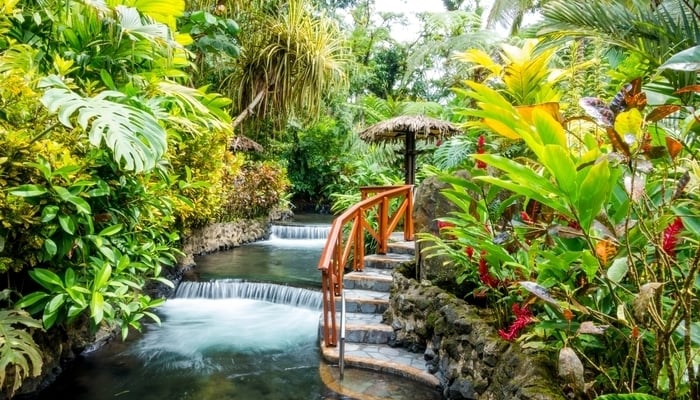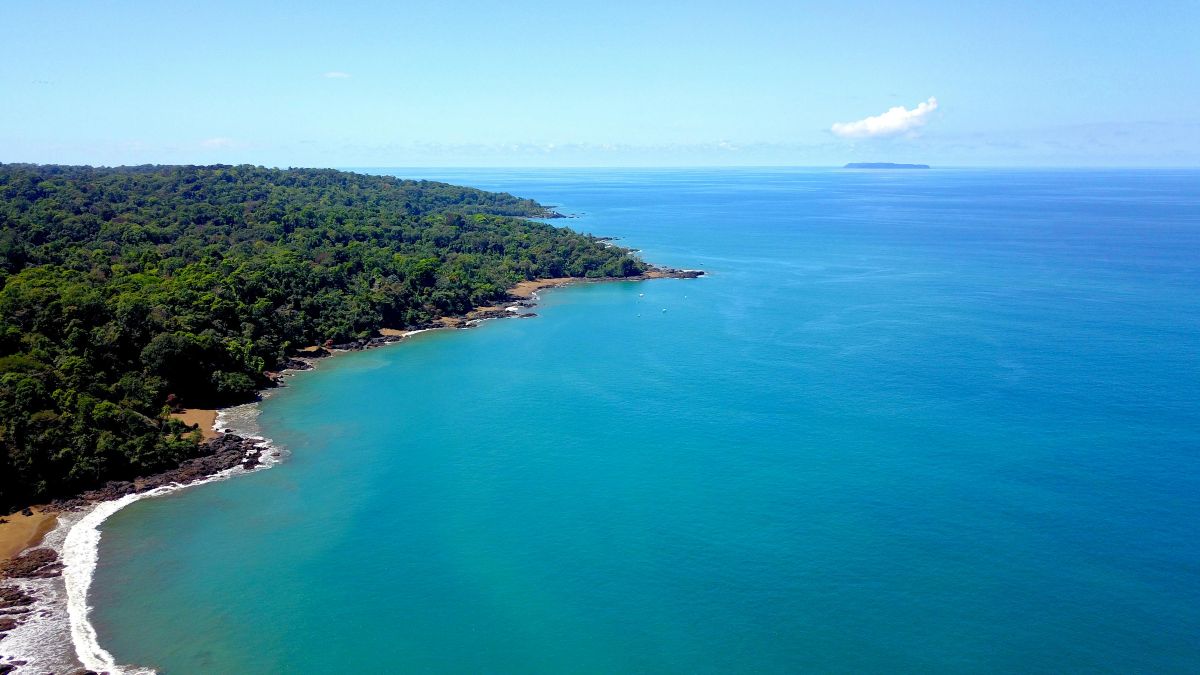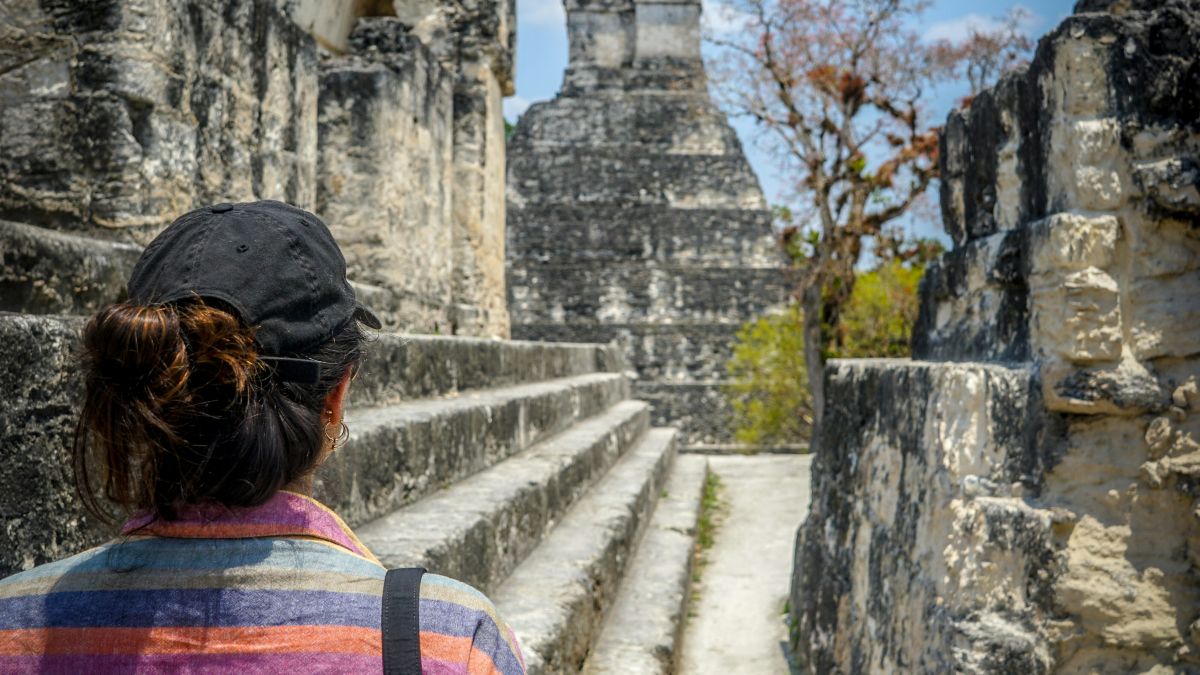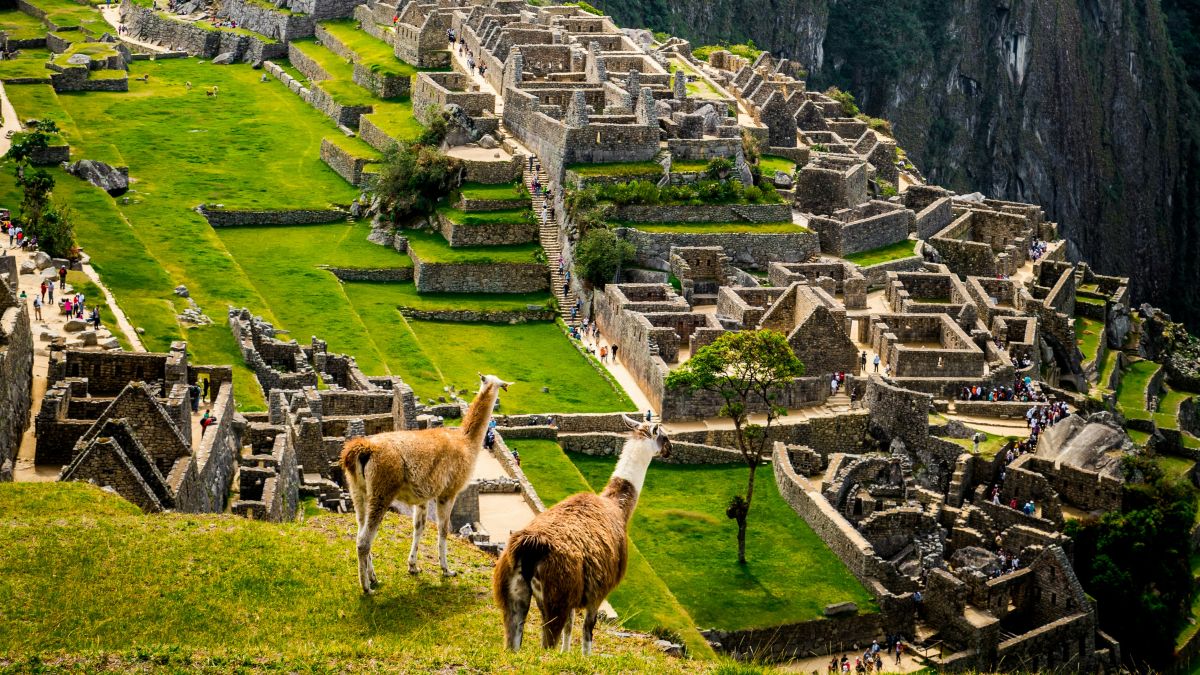Let’s Talk Tourism is a new series of videos from Namu Travel Group founder and CEO Casey Halloran. In the series, Casey talks to movers, shakers, and experts in Costa Rican (and Central American) tourism. His goal is determine the state of the industry during the current pandemic and beyond. In this first episode he talks to Costa Rican hotel owner Meni Mikowski.
Meni Mikowski is a true tourist maven in Costa Rica. His family built, owns and operates the famous Tabacon Resort & Spa in Arenal. He also owns the boutique Nantipa Hotel in Santa Teresa on the Nicoya Peninsula.
Mikowski hails from established Costa Rican hospitality royalty. He’s a third-generation hotelier, whose great-uncle opened San Jose’s Hotel Presidente in 1963.
I’ve known Meni for years and always enjoy and value his insight. In this interview I found him (cautiously) optimistic about the future of tourism in Costa Rica.
Here are the highlights of our conversation. We’ve outlined the essence of what we were talking about rather than providing an exact transcription. To see the whole thing, please watch the video below:
How long have you worked in Tourism?
Unofficially I started in 1991 when my dad bought the Tabacon property and started designing the place. I was involved on the outside, looking at what he was doing and helping out a bit. We opened the Tabacon in 1993 and I was around for that. But my first official job in tourism was when I become the general manager of the Hotel Presidente in 1996.
What’s changed the most since you’ve been in the business?
There’s been a lot of changes – mostly for the good. For me, a significant change was when the Four Seasons opened in 2004. That brought Costa Rica into the luxury market. Before the Four Seasons, nobody was doing luxury in Costa Rica, at least not in any meaningful sense. But the Four Seasons demonstrated to us all that there was real demand for luxury hotels here. They came and showed us how to do luxury hospitality, and most of us jumped on board.
Another change is the push for sustainability. This was something spearheaded by colleagues who were huge believers in the program, and then pushed by the ICT (the Costa Rica Tourist Board) as the main selling point of Costa Rica. It’s created a culture where tourism motivates businesses to become more green, more sustainable.
Those are the two major changes I’ve seen. The third trend is the opening up of flights to Europe that’s happened in recent years, and has allowed us to become less US-dependent.
Tabacon has been named one of the Top 15 Resorts in Central America by 2020 Conde Nast Traveler Readers´s Choice Awards! Thank you to all of you who voted for us! #RCA2020 pic.twitter.com/vwLzrqw0KC
— Tabacon Resort (@TabaconResort) October 6, 2020
Talking of sustainability, how do we in Costa Rica avoid becoming “Cancun”? Or is that a slow, inevitable march for all popular tourist destinations?
Costa Rica’s done a great job. If we can keep on the direction we’ve been on, we’ll be fine. That direction isn’t planned, by the way. It happened organically. The big Cancun-style resorts are in Guanacaste, or planning to be in Guanacaste. If we can leave that corridor between Tamarindo and the Papagayo Peninsula as the “big resort destination” in Costa Rica, we can allow that part to become our “Cancun”.
If that area becomes our “Cancun”, we can leave the rest of the country for smaller, sustainable, independent family-run hotels. That way we can have a nice success story of combining both models.
Obviously we’ll get these big hotels in San Jose, too. That’s inevitable. But outside of that, we can keep all the other regions of Costa Rica the way they are and with the same model.
Tamarindo, Costa Rica ?? from above. pic.twitter.com/97uNLi3MF1
— CentralAmericaLiving (@VidaAmerica) September 20, 2020
Do you think there’s potential for a tourism resurgence in downtown San Jose?
The reason why downtown San Jose isn’t a big tourist destination is because after sunset, there’s very little life there. People looking for culture, nightlife, etc. don’t find it in downtown San Jose because the place is empty at night. People don’t live downtown. It would be great if we could repopulate downtown San Jose and make it vibrant.
Lots of cities around the world have programs to bring back young people with subsidized housing to create livable neighborhoods. That could be done in downtown San Jose, there are so many empty buildings there. If we attracted young people back into the center of San Jose to make it a vibrant young city, we’d get more tourism. You see this a little in Barrio Escalante and Barrio Amon, but we need that more in the downtown area.
The ever-vertical west side of San José, Costa Rica. Remember when this was all trees? https://t.co/zVVfapLSgH pic.twitter.com/KpQFDdrNaA
— CentralAmericaLiving (@VidaAmerica) October 9, 2020
Has this pandemic forced you to rethink any of your assumptions about tourism or how you and your team operate?
It’s forced us to look at how travel and hospitality may play out after this. For example, at Tabacon we had a fantastic breakfast buffet. It was a huge spread, a highlight of the hotel. That’s gone now. But is it gone forever or will guests ever want to use buffets again? We don’t know and we’re trying to pre-guess details like that. What will post-pandemic tourism look like?
Tourism seems to have been taken for granted or forgotten in Costa Rica by the government. What do you think are the misunderstandings between Costa Rica’s tourist industry and the politicians? What do you wish they understood?
Tourism is a long-term business. Bringing tourists to Costa Rica takes significant planning and promotional efforts. So when someone says, “okay let’s open August 1,” it’s not like they’re all sitting at the airport in Germany waiting to come to Costa Rica. It takes promotional effort to sell Costa Rica as a destination.
If we don’t signal immediately that Costa Rica is open for business and welcoming tourists, if the ICT doesn’t start promoting Costa Rica to the world again, we run a very, very high risk of losing the high season. No-one expects pre-pandemic occupancy, but we would at least hope to break even. But we need to do something now.
It was great when we announced all the US could come in from November 1. People in the States are looking at their winter travels now. It’s getting cold and people are thinking of Christmas vacations and winter breaks.
Sure, some won’t travel until there’s a vaccine, but plenty will. Lots of people are fed up and itching to travel.
We need to find those people ready to travel, we need to work with the airlines to start flying again, and we need to promote Costa Rica again in the US. Belize is promoting themselves. So’s the Dominican Republic and Mexico. Americans are wondering right now where to go and Costa Rica’s doing nothing to promote itself to them. That’s the problem.
Costa Rica’s traditional high season is approaching. How will it play out this year?#costarica #travelhttps://t.co/TtRrBgy7Mv
— CentralAmericaLiving (@VidaAmerica) October 15, 2020
If you had the power to shape Costa Rica’s tourism future, what would you do?
Well first off, let me say our tourism minister Gustavo (Segura) is a fantastic person. We couldn’t have a better person in that position. He doesn’t need my advice, there’s nothing I could tell him he doesn’t know or hasn’t thought about already.
He’s a known, proven entity, a hard worker and a very smart person. He needs our support as a sector.
We all need to understand though, he’s not the boss. He might head the ICT but the final decision isn’t his. That comes down to the health authorities, the airport/airlines, budget, and so on. He needs our help getting his ideas across. So if you ask me what I would do, I would support Gustavo Segura.
What do larger, more experienced tourist destinations do that we don’t?
This goes back to what type of tourism do you want to bring. What kind of infrastructure do you want to develop? It goes back to your Cancun question. You may say Mexico’s doing a lot of things better than we are, but the truth is, they’re attracting a market segment that may not be a good fit for Costa Rica. So we have to first think of where we want to be in ten years and who we want to bring in.
I actually think we hold our own in Costa Rica. We’ve had our own successes with No Artificial Ingredients and the whole sustainability front that really took off worldwide. We’ve done a lot of good things.
It’s a good time to take a step back and decide what kind of tourism we want, where we want to do, and what tourism is going to look like on the other side of this pandemic.
When you read expert analysis on post-pandemic tourism, you have to believe Costa Rica’s in a real good position to come out of this. People don’t want crowds at all, they want space and nature. A place of healing.
Costa Rica with its small hotels in nature with fresh air are perfect for post-pandemic travel. The only question is can we communicate that well enough to potential tourists?
With our range of new health and safety protocols, we’re slowly welcoming back international visitors. @skift tells you what the “new normal” looks like for tourism and business events in Costa Rica in their latest article.
Check it out here: https://t.co/09VUYsHKlK
?: Uvita pic.twitter.com/ApmV5TwH0K
— Visit Costa Rica (@Visit_CostaRica) October 10, 2020
What are the most common misconceptions about Costa Rica tourism?
When I’m talking to travel agents around the world, I realize how stretched they are. They have be experts on everywhere and so think Costa Rica is something like two nights in Arenal and five in Papagayo and go home. It’s not their fault, but agents outside of Costa Rica who don’t know Costa Rica have a hard time putting together itineraries for Costa Rica.
The misconception is that global agents miss out on all the beautiful, lesser known beaches around Costa Rica.
What’s your favorite beach in Costa Rica? Where do you go?
Santa Teresa of course! And when I’m talking to agents outside of Costa Rica, most of them have never heard of the place.
Life slowly but surely getting back to normal in Santa Teresa…https://t.co/IgERK4PFai pic.twitter.com/JbCT2iwxMS
— CostaRican Vacations (@CRVTravel) October 12, 2020
What do you enjoy most about working in tourism?
This might be a cliche. There’s a lot of jobs that might pay more, might be more interesting but we’re creating experiences, creating memories. We’re making people happy, dealing with people on their vacations. It’s not life or death, the biggest problems we face are missed transfers, lost luggage, guests not liking their rooms. It’s not that serious when you compare it to other industries.
We have it easy in tourism. I know you get bad clients who yell at you but for the most part, it’s easy and everyone’s happy. At the end of the day people are traveling to enjoy themselves and all you need to do is deliver.
We have a beautiful country and capable staff. That’s a great advantage of Costa Rica that many don’t appreciate. The people. We’re hard workers. Costa Ricans are smart, educated, pura vida people. When you go to other parts of the world and see service levels there, you realize how fantastic we are in Costa Rica.
I think it comes down to our history, to our democracy we have in Costa Rica. The only thing is, we don’t quite know how to communicate this huge competitive advantage we have in Costa Rica compared to other countries in the region.
In CR we call ourselves “ticos”. This way of calling us was born years ago when Costa Ricans used to add the “-tico” to refer in a diminutive way to something, for example “Poco” (little/few): PoquiTICO. #CostaRica #TicoSlang #PuraVida #Tabacon pic.twitter.com/uJeXnSLmHl
— Tabacon Resort (@TabaconResort) September 25, 2020
You’ve mentored a handful of people I know in tourism. Who mentored you? Who are your favorite people in tourism who’ve taught you?
That’s an easy answer. My dad was my mentor. As far as who have I learned from, well, you can learn from anyone. Everyone has something to share, something to teach. It’s a matter of you being open to learn.
We had a German manager at Tabacon for a number of years. He turned us into a luxury hotel and helped navigate us through the 2008 crisis. I learned a lot from him. I’ve learned a lot from chefs and sales reps all over the world.
In Costa Rica, passionate people impress me. Glenn from Finca Rosa Blanca, Hans from Cayuga. In Arenal, I admire Umberto from Jacamar Tours. He arrived in Arenal with a backpack and rose from tour guide to travel entrepreneur with multiple businesses. There’s lots of success stories like that in Costa Rican tourism.
Last question. What is pura vida?
Pura vida is a noun, a verb, an adjective, a salutation, an insult. It’s whatever you want it to be, right? I have a friend who says two Ticos can have a whole conversation using only the words pura vida.
Pura vida is a lifestyle, a slogan, a culture, a way of life. When they decided to rebrand the country from No Artificial Ingredients to Essential Costa Rica, I don’t get why they didn’t use Pura Vida Costa Rica. It means everything. Pure life. It’s nature, optimism, future, health… everything.
Thanks so much for the chat, Meni, I’ve enjoyed it.
Thanks so much, Casey. Great for the chat and let’s keep on doing what we’re doing. Let’s keep trying to unify this broken sector to move along together. I know we’ll come out of this stronger.
We need to find a way to help the smaller businesses survive because they’re the lifeblood of Costa Rican tourism. Going back to Cancun, I’m sure all those big hotels survived. I’m not so sure about the taco stands, though. That’s who we need to help.
A defense of tourism in #CostaRica on #WorldTourismDay: Whatever you do for a living in Costa Rica, you’ve benefited from tourism. Even if you do nothing for a living…https://t.co/ZpZBCmVTUh
— CentralAmericaLiving (@VidaAmerica) September 27, 2020
It was great chatting to Meni about his take on the state of tourism in Costa Rica.
His overall optimism that we’ll get through these hard times as long as we all stay unified and focus mirrors my own. If you have any interest in Costa Rican tourism, I hope you enjoyed this read, and I’d urge you to watch the video for more insight from my and Meni’s chat. Look forward to posting the next edition of Let’s Talk Tourism very soon!
Related:
Let’s Talk Tourism! Casey Halloran and Colin Brownlee Talk Costa Rica Tourism
Let’s Talk Tourism! Casey Halloran and Hans Pfister Talk Costa Rica Tourism
Let’s Talk Tourism! Casey Halloran and Jim Damalas Talk Costa Rica Tourism
Let’s Talk Tourism! Casey Halloran and Adam Baker Talk Costa Rica Tourism
Casey Halloran is the co-founder and CEO of the Namu Travel Group. He lives in San Jose, Costa Rica with his wife and children.




